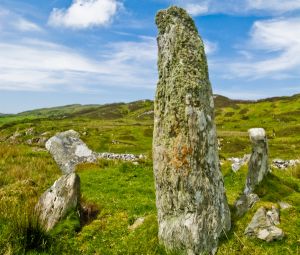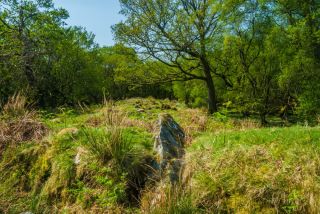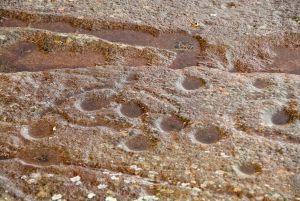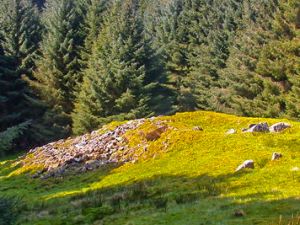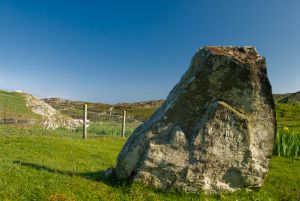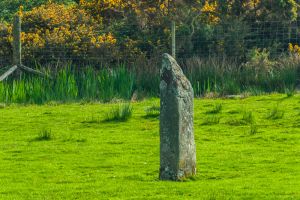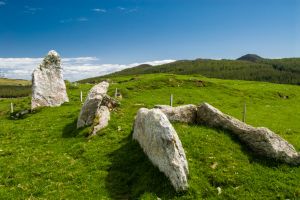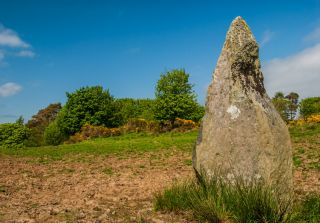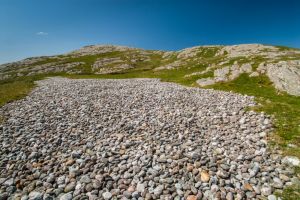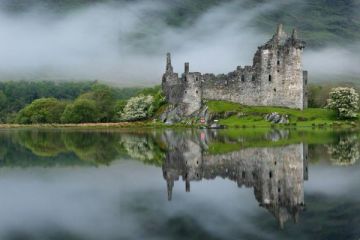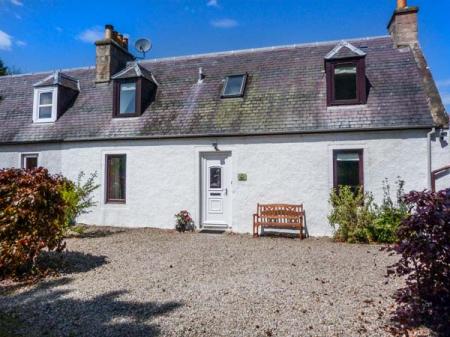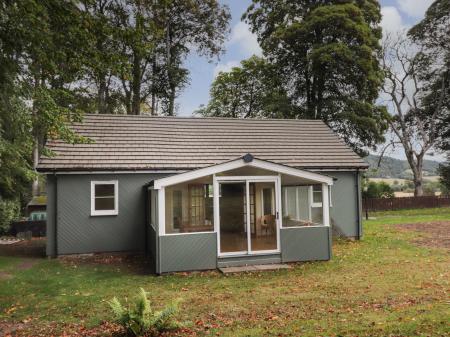Strathclyde - Prehistoric Sites
- Map of Prehistoric Sites in Strathclyde
- Map of ALL Prehistoric Sites in Scotland
- Map of all attractions in Strathclyde
Buaile Riabhach is a small stone circle on a hill above Scalasaig, with a 7-foot high standing stone forming a circle with seven smaller stones ranging from 18 inches to 2.5 feet high. The taller stone was said locally to represent Christ, and the smaller stones to represent the Apostles.
Scalasaig, Argyll and Bute, Strathclyde, Scotland
Heritage Rating: ![]() ?
?
Nearest Self Catering Cottages
In a woodland setting is a very well-preserved Neolithic chambered cairn of the Clyde type, with a burial chamber at each end and a third chamber set into the southeast side. One stone shows clear cup marks.
South Wood of Lenuhuline, Glecknabae, Glecknabae, Bute, Strathclyde, Scotland
Heritage Rating: ![]() ?
?
Heritage Highlight: Three burial chambers
Nearest Self Catering Cottages
The Cairnbaan Cup and Ring Marks lie at the southern end of Kilmartin Glen, in an area blessed with a fabulous range of prehistoric monuments. Here at Cairnbaan are four natural rock faces carved with an array of cup and ring marks. Three rocks lie close together while the fourth is 100 metres away up a winding path.
Kilmartin Glen, Cairnbaan, Strathclyde, Scotland
Attraction Type: Prehistoric - Carved Stone
Heritage Rating: ![]() ?
?
Nearest Self Catering Cottages
One of the most famous Neolithic long cairns in the southwest of Scotland, Carn Ban is an elongated burial cairn in a wooded setting, built in a trapezoid shape, with a horned forecourt and a central passage divided into several sections.
Lagg, Isle of Arran, Arran, Strathclyde, Scotland
Heritage Rating: ![]() ?
?
Nearest Self Catering Cottages
Clach A'Pheanais is a standing stone located just northeast of the ruined medieval chapel of St Catherine (Cill Chatriona) in Balnahard, northern Colonsay. The stone is known locally as The Stone of Penance, as parishioners of St Catherines performed penance at the stone after going to confession. One record suggests that the stone was used for the flagellation of penitents.
Balnahard, Isle of Colonsay, Strathclyde, Scotland
Heritage Rating: ![]() ?
?
Nearest Self Catering Cottages
A solitary standing stone stands by the southern end of Claggain Bay, east of Port Ellen. A short distance away is a vitrified fort on Trudernish Point. The stone is about four feet high.
Claggain, Port Ellen, Strathclyde, Scotland
Heritage Rating: ![]() ?
?
Nearest Self Catering Cottages
The partial remains of a chambered cairn stand immediately south of the minor road to the Oa peninsula. A single chamber survives, with a solitary standing stone that may have been a portal. Open site.
Port Ellen, Strathclyde, Scotland
Heritage Rating: ![]() ?
?
Nearest Self Catering Cottages
A solitary standing stone with a tapering top stands alone in a farm field just outside Rothesay at Craigberoch Farm, off the B878. The SW face of the stone has two (some sources say three) Neolithic cup marks.
Craigberoch Farm, Rothesay, Bute, Strathclyde, Scotland, PA20 0PY
Heritage Rating: ![]() ?
?
Heritage Highlight: Neolithic cup marks
Nearest Self Catering Cottages
A fascinating stone circle, or oval, in open moorland. Cultoon seems to have been only partly finished, with two upright stones and many more scattered on the peat moor. Local tradition says two feuding clans fell out when working on the stone circle so the project was abandoned.
Portnahaven, Strathclyde, Scotland
Heritage Rating: ![]() ?
?
Nearest Self Catering Cottages
Dun Gallain is an Iron Age dun, or hill fort, on the western shore of Colonsay. The dun is of the type termed a promontory fort, utilising a natural headland, defended on three sides by high, steep cliffs. The fort is approximately 35 metres by 25 metres in size.
Machrins, Isle of Colonsay, Strathclyde, Scotland
Heritage Rating: ![]() ?
?
Nearest Self Catering Cottages
